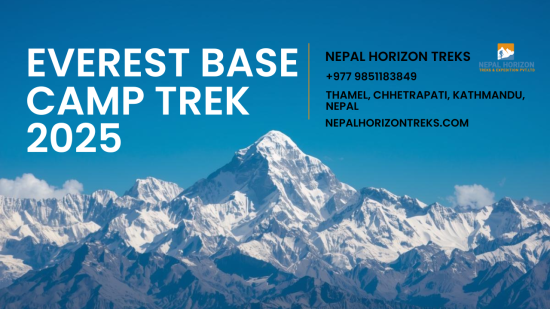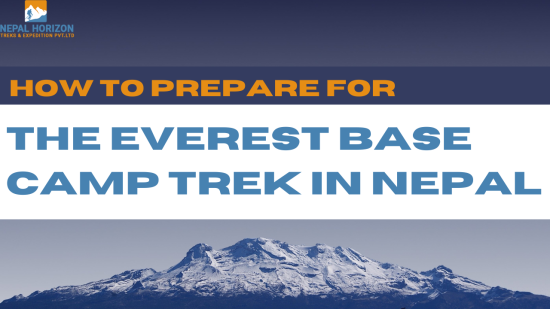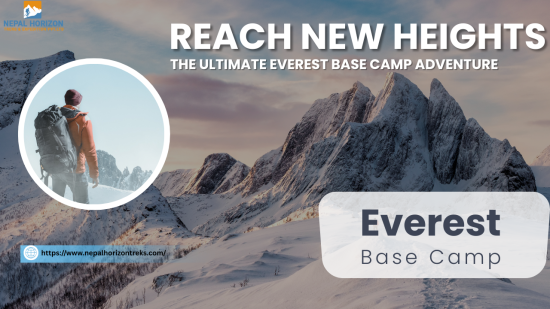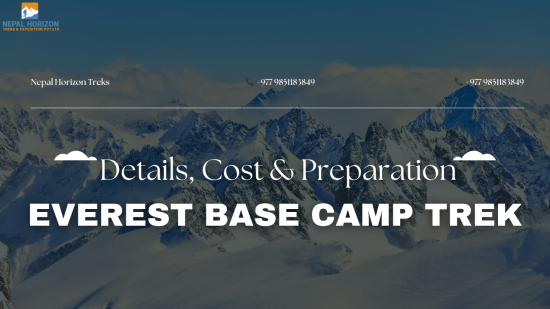Annapurna Base camp a complete guide
7th February 2020

Annapurna Base camp trek is named as the most popular and fascinating trekking region. It is placed in the second position after the Everest region. In Annapurna Base camp, you will pass through the majestic and breathtaking scenery and diverse landscapes, commonly Annapurna Base camp is known as the Annapurna Sanctuary. You can enjoy the thick bamboo, full of rhododendron, pine forest, and beautiful mountain views and a mix of cultures unparalleled by other treks. Here we have Annapurna Base camp trek a complete Guide for beginners And experienced. Annapurna Base camp trek route will offer you outstanding views of Himchuli, Annapurna I, Manaslu, Macchapuchhare, Poon Hill, and many other gorgeous mountains. It is also known as the unique trek because this trek is pass through the quaint Gurung and Magar villages, lush, dense forest and terraced farmland along with enormous glaciers. This Annapurna base camp is a beautiful combination of mountain scenery and the cultural and traditional diversity bisect a broad range of lush rural farmlands and villages which still carrying the old age captivating culture and tradition. Annapurna region is also rich in wildlife and natural vegetation with different species of mammals, amphibians, reptiles, and more than 450 different species of birds, various species of rhododendron too. There is also one attractive place name Jhinu where you can get a natural hot spring that can help you to refresh. Annapurna region has many other fascinating trekking areas and routes like Upper mustang, Ghorepani Poon Hili, Annapurna round, Dhampus trekking, Ghandruk Village trekking, and many more. Offering one of the most stimulating trekking routes throughout the whole World of Annapurna base camp trek is excellent for all those trekkers who want to feel some adventurous air of the World.
Facts about Annapurna Base camp
- Annapurna Base camp trekking towards the south part of Annapurna
- This Annapurna Base camp trekker will get a chance to view the 10th highest mountain in the world, named as the Annapurna I
- The Annapurna base camp gives you the 360-degree panorama views of the stunning mountains in the Annapurna region that includes Macchapuchre, Annapurna III, Singu Chuli, Annapurna south, Annapurna I, Gangapurna, Hiunchuli.
- In this trek, trekkers can enjoy two base camp 1. Annapurna Base camp 2. MAcchapuchhre Base camp
- There will choose to they can either go to the Annapurna Base camp or take a detour to Ghorepani poon hill or Ghandruk or both.
- If trekkers choose to take a circuit to Ghorepaani, then they will get a particular part to see the second famous viewpoint of Poon hill after Kala Patthar in the Khumbu region. And also the view of Annapurna South, Hiunchuli, Macchapuchre, Baraha shikar, Dhaulagiri, Nilgiri South, Tukuche are magnificent.
- You can explore a large variety of landscapes from the deep valleys, lush green paddy field,sub-tropical rainforest, alpine slopes to an arid Tibetan plateau, and the deepest gorge in the World.
- The local people will welcome you with there warm love and hospitality.
Highlights of the Annapurna Base camp trekking
- One can visit the Lake City of Nepal, Pokhara
- Incredibly diverse scenery, including both lowland villages and high mountains
- Explore the unique settlement, culture, tradition, lifestyle, and Hospitality of Magar and Gurung Nad thakali people.
- You can get rest in tea house and lodges entire the whole trek
- The top of Annapurna is formed by Limestone, which is the same as the Dhaulagiri and Everest.
- The deepest George in Nepal is Kali Gandaki, which lies between the Annapurna range and Dhaulagiri.
- Tilicho lake lies the highest point of the World, which lies in the Annapurna region. At an elevation of 4, 919m, the trail to this beautiful lake is often taken by acclimatization.
- Beautiful sunrise nads sunst vies in Annapurna range, MAcchapuchre, Dhaulagiri .
- Subtropical and alpine climate, animals, vegetation, and birds
- Explore beautiful villages of Gurung and Magar like Ulleri, Ghnadruk, and Ghorepani
- Hot spring in Jhinu Danda, perfect tub to relax
- A perfect blend of scenery and fantastic landscapes.
Where is Annapurna Base camp?
Annapurna Base camp is in the Annapurna Conservation area near lake city of Nepal, Pokhara. It is in the west of the Mardi Himal trek route and east of Poon Hill and Ghorepani. The trail goes with the small villages, mountains, forests, and the beautiful flowers blossoming throughout the whole path.
Itinerary
Annapurna Base camp 13 days trek.
Day 1: Arrival in Kathmandu Day 2: full sightseeing in Kathmandu valley Day 3: Drive from Kathmandu to Pokhara Day 4: Short drive from Pokhara to Nayapul Day 5: Nayapul to Ghorepani Day 6: Ghorepani to Tadapani Day 7: Tadapani to Chhomrong Day 8: Chommrong to Himalayan Day 9: Himalayan to ABC Day 10: ABC to Bamboo Day 11: Bamboo to Jhinuwa dhada Day 12: Jhinu dhada to Nayapul Day 13: Drive back from Pokhara to Kathmandu
Annapurna Base camp 7 days trek.
Day 1: Pokhara to Nayapul to Ghnadruk Day 2: Gnadruk to Chhommrong to Sinuwa Day 3: Sinuwa to Bamboo to Dovan to Himalayan to Deurali Day 4: Deurali to MBC to ABC Day 5: ABC to MBC to Deuralu to dovan Day 6: Bamboo to Sinuwa to Chommrong to kyumi Day 7: Kyumi to siwai to Pokhara [contact-form-7 id="380" title="Blog Contact"]
Permits and costs for Annapurna Base camp trek.
ABC is located in the Annapurna Conservation area. Both solo and group can trek in Annapurna base camp, But both solo and group should need permits during Annapurna base camp. Trekkers can apply for the permits by two passport size photos. In the Annapurna region, the permits fee for the SAARc national s is NPR 200 only and 2000 only for national other than SAARC. The children under 10 age don’t require any permits. These permits are only available for one entry and exit. These permits are non-transferable and non-refundable. Also, this permits only allow trekkers to enter the designated places within the conservation area. Trekkers also required trekker’s Information Management System (TIMS) card to take entry in Annapurna Base camp. TIMS cards should be obtained by both solo and group trekkers. Trekkers need a copy of passport and passport size photo and$20 to group( green card) and for solo $10( blue card). TIMs card can get in Nepal Tourism Board in Pokhara and Kathmandu and TAAN secretariat at MAgligoan nad TAAn Secretariat in Pokhara.
Overnight at teahouse what it means?
During your trek, all trekkers will spend the night in a teahouse. These are the small houses that only have communal space and only some sleeping areas. In communal space, you can have your breakfast, lunch, and meal nad charge your electronics devices. There will be no more facilities for running water nor electricity.when you will reach in3500 m in altitude you can get facilities of showering with hot water. You should take your last shower in the lower elevation where there are facilities of boiling water.
Appropriate Season for Annapurna Base camp.
Annapurna base camp trek can experience on any occasion of the year. If you are prepared for the proper season, then autumn and spring would be the most excellent two-season for Annapurna Base camp Trek in Nepal. The suitable time to visit Annapurna Base camp is between October and November or in mid of December. This is a time just after monsoon so that the sky will be so beautiful; the weather would be so supportive. All forests are full of greenery. We can see eye-catching and unobstructed views of Himalayan ranges at this time. The second highest time for this Trek in Nepal is between February to April. In this season, rhododendron starts to bloom, and other flowers also set in motion to spread their sweet smell. This season is free of snow and quite warm. This season is also so helpful, and the sun shines brighter. Between December to February is not such an excellent season to Trek in Annapurna Base camp. In this season, there are chances of snowfall which worry our Trek.
Acclimatization
All of the Himalayan glacier treks are planned with high-quality awareness of Acute Mountain Sickness. Going up at the higher altitude without any rest will make you sick and also in the last stage of life. We understand for the safe and healthy trek; there should be enough time for acclimatization. To choose the itinerary, you must notify the acclimatization for your health trek.
Accommodation
There are many tea houses, visitor houses, and lodges around the Annapurna base camp Trek. This Trek is also called as Teahouse Trek. As the altitude increases, and the lodging becomes more necessary. The rooms are basically for two sitters. You have to hold your sleeping bag and towels. Single rooms can be found in lower valleys, but you have to share at a higher altitude. There are not many services of the attached bathrooms, but hot water is available for bathing. But in high height, there is no solar power to get automatic hot water. In minor altitude valleys, you can get wifi service is paid. In high altitude, people use to take the cost for charging electronic devices. People are obliging and kind, so if you got some problem, you could frankly share with a related person.
Foods in Annapurna Base camp.
Through the Annapurna Trek, we can find a distinctive Nepali meal, i.e., Rice, Dal, curry, Pickel. This means so healthy, fresh, and best for trekkers in Annapurna base camp. In some tea shops, you can get varieties of food like Chowmein, Pasta, Cupcakes, and many other western dishes that you can eat with your own money. As the elevation increase, the rate of meals and drinks like beer, water, tea, coffee also increases. It is much better to bring chocolate, energy bars, peanuts from lower altitude places rather than buying on higher altitude places. We will recommend everything to save you money.
Prepare your body for Annapurna Base camp Trek
For every Trek, you have to do once a health checkup. You have to measure all your blood pressures, sugar, cholesterol, and many more. After checking all those things, you have to consult with your doctor about your Trek and its elevation. Then you have to start to do simple exercise, warm-up. You have to focus on a cardio workout to stretch muscles. You have to begin to do an exercise about 2-3 weeks before the Trek. Eat the foods which can make you full of energy and increases your strength. Choose healthy foods in Trek as well as before the Trek. If you take some medical pills, you have to consult with your doctor.
Travel Insurance
For every Trek in Nepal, you have to do Travel Insurance. You have to smart, and your insurance should cover every expenditure like various injuries or accidents. It has to include all the fees of the ambulance, helicopter, treatment, hospital bills, including deportation cost. Also, the policy must include all the activities you will do in Nepal. The system must consist of the charge of theft, robbery, cancellation, etc.
Annapurna Base camp difficulty level
Annapurna bAse camp trek is known as the most comfortable base camp trek. As there is a low chance of altitude sickness, .all you need to complete this trek healthier is to increase your fitness level and stamina to walk about 6-7 hours per day. You can increase your strength by doing various cardio and exercises nad also by eating protein foods.No experiences are required, too. Still, if you know hiking, trekking, and camping, it will be more accessible to them. Difficulty can only be experienced in case of bad weather and sudden natural disasters.
Recommendation For solo trekkers or female solo trekkers
It will be comfortable and safe for solo trekking for both males and females in the Annapurna region of Nepal. But we want to recommend trek in a group. If you have4 more budget nad you are concerned about your safety; then we will suggest you join the group.
Packing list for Annapurna Circuit Trek
Annapurna base camp is also known as the best place for trekking for all kinds of trekkers.because of the climatic alternation. We want to recommend you some packing list. So you need to pack your clothes according to our list.
Supportive daypack
It is your bag where there is an integral part of your journeys like snacks, dairy maps, rain jacket, camera, water bottles, down jacket, sunscreen, trousers, hat, and many more things.
A BIG RUCKSACK
This tip only applies to those traveling the base camp solo, without any guides. If you're going to the Annapurna Base camp alone, you're going to need to pack and carry your backpack. Make convinced yours has a high-quality back hold and a waist strap as the days are widespread, vertical, and very tiring, and you'll need as much calm as possible.
WATERPROOF DRY BAG
Nothing will put a dampener on your trek quite like wet The waterproof dry bag is one part vac-seal bag, water protection, all parts baggage savior; priceless for keeping our clothes dry during raining days on the track, gifting us additional gap when we were stressed to fit an extra temperate jacket amongst our snacks and rain gear, and protecting our cameras from dust and rain.
Clothing
Our trek will start from a 1070 m altitude and ends in 4130 m. Therefore the dressing in a layer is the best idea. This way, you can add or remove the clothing item acc to your wish.
Baselayer
For this trekking, your base clothing sense must be smart. The base layer must be secure as we will reach in high altitudes. This base layer is the layer that will be the most closet to your body, so pack some warm and comfortable base layer clothes.
Second layer
The second layer is the cloth where you waer over the base layer. So it also is warm and comfortable. Fleech is what you should carry for the second layer. This is soft and keeps your body warm. This second layer is available for both peer and lower parts of the body, .but for this trek, then only the upper part of the second layer is enough.
Outermost layer
This third band outermost layer is the most important of all the layers. It will be such cloth which can protect you from the snow, rain and extreme cold at high altitude.Your outermost layer most is waterproof, so you can get rid of cold.
List of extra clothing Down vest
- Polypropylene shirts
- Light thermal tops
- Non-cotton underwear briefs
- Hiking shorts
- Hiking Trouser
- Waterproof shell-pants, breathable fabric
- Lightweight thermal bottoms
- Fleece or wool trousers
- Waterproof breathable fabric shell jacket
Women sports bras, synthetic We want to recommend to women to pack synthetic sports bra. Because it will take wich moisture from your skin.
Footwear
- Thinner socks
You should pack moisture-wicking socks that need to be breathable, which will make your feet dry.
- Thick wool socks
If you are trekking in the cold season, you must pack warm wool socks because they are super friendly, comfortable, and protect your feet from blisters.
- Hiking boots
Pack your boots according to specific feet size. If there is the wrong side of the boot, then it will make you so uncomfortable in quite an uneven and rocky path and during your whole journey too.You should not think to pack leather boots as they are too heavy. And your shoes need to be waterproof as well.
- Camp sandals
You need to pack camp sandals to walk around the camps and tea houses. You can also use this sandal while bathing, eating, and many more camp activities. Headwear
- Lightweight fleece gloves.
It is useful in the Light cold region.
- Heavyweight gloves.
It is use full in High altitude. It will be safe your hand to get from blisters.
- Waterproof gloves.
It helps your hand while raining. Headwear
- Sun hat.
It will help you during sunny days. It will protect skin from sunburn and gives you shade.
- Woolen hat.
While trekking in high altitude, you must use a woolen hat.warm hat will cover your ear and head, which makes you feel warm.
- Scarf or Bandana
To be away from the dust, you should use scrap; then, you can protect yourself from the sun and sand by entering your scarf around your nose and mouth.
- Sunglasses
To protect your eyes from the dust, wind you should use sunglasses. Mainly to avoid hight intensity UV rays, you can use Sunglasses.Sunglasses also prevent yourself from a headache, snow blindness, and headache.
- Sleeping Accessories
In Nepal, there is extreme cold in the mountains, and in the tea house, you may not get a proper warm blanket, so you need to carry sleeping bags and sleeping bag liner yourself.
- Pillowcases
For comfort night sleep, you need to take your inflatable pillow. And because of trines, you may want to sleep in a quiet environment, so we want to recommend you to bring earplugs.
Electronics
- Mobile Phone and charger.
- Power Bank.
- Headlamp and extra batteries.
- Camera, Charger or Batteries and Memory Card.
Other personal equipment
- Note/ dairy
- Pen
- Moisturizer and lip blame
- Sunscreen
- Water bottles
- Books
- Water purifier
- Head torch
- Wet wipes
- Hand sanitizer
- Dry wipes
- Pain reliever
- Light thermal tops
- Fabric shell jacket
- Polypropylene shirts
- Hiking shorts
Toiletries items
- Bar soap
- Toothbrush
- Toothpaste
- Paper soap
- Small towel
- Toilet paper
Utensils
- Lunch box
- Spoon
- Mug
- Plate
First Aid
In this long journey, who can say that what can happen or not, so we want to advocate you to take your first aid kit? To be away from altitude sickness, wounds, and other harms, you should pack various medicines as you like.Your first aid kit most include those things
- A splint
- A list of the emergency number
- Adhesive bandage
- Sharp scissors
- Antiseptic wipes
- Calamine lotion
- Safety pins
- Adhesive tape
- Tweezers
Pads of different sizes.
- Elastic bandage
List of Medication :
- Chlorine Dioxide Tablets/ Water Purification Tablets
- Paracetamol
- Insect Repellent
- Antiseptic Cream
- Imodium
- Antiseptic Wipes
- Small Bandages and plasters
- Diamox/ Altitude Sickness tablet
Important documents and items.
- Passport/ passport size photos
- Proof of insurance.
- extra passport size photos.
- A credit card should be kept to withdraw your funds from cash machines in an emergency case.
- Airline tickets.
- Separate photocopies of passport.
- Traveler’s checks
[contact-form-7 id="380" title="Blog Contact"]
Recent From Blogs

28th October 2025

25th October 2025

24th October 2025

18th October 2025

14th October 2025

12th October 2025

10th October 2025

7th October 2025






